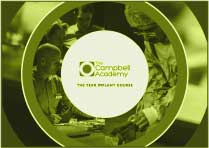
Last week saw the final conclusions of our 2020 Year long dental implant courses (Year one and Year Two).
On Friday afternoon we hosted a blended session for the Year Two group which involved live surgery for two clinical cases, one which was a large GBR Bone Grafting case and the other which was a consultation.
It’s hard to imagine that you can take a consultation of a patient who might need the placement of two upper front teeth and talk about it all afternoon, but so it was and so it is.
The reason for that, is that when it reaches this level; at the end of two years of deep and intensive interrogation of implant treatment and treatment planning and options available and then you throw in the ethical consideration, communication considerations and consent, the process can be discussed almost without exhaustion.
In the discussion on Friday afternoon, for the six people due to the nature of the pandemic etc.
One has an interest in endodontics, one has a masters in implant dentistry, one is a surgeon with no real restorative practice and the others are general dental practitioners (in the best possible way).
At the end of the discussion of the photographs and intraoral radiographs and CBCT scan, we had a significant number of possible roads that the patient could travel.
How do you sort that out?
They’ll know well from the psychological research on choices that to offer a patient more than three choices is to paralyse their ability to choose and so, while it seems ethical and honest, to give a patient all the options they are not qualified nor do they even have the psychological apparatus to make an appropriate choice in that circumstance.
Enter the role of the professional and enter the role of the ‘daughter test’.
Add to this the role of subtle communication and then the huge potential problem of cognitive dissonance which might restrict you in your ability to stop and expect that something way beyond your capabilities.
Add the ‘Dunning-Kruger effect’ where you might not know what you don’t know and then the uncertainty of the prognosis of other teeth, the habits of the patient and the perceived expectation of the patient that you have at the present time (which may be entirely wrong because you may be biased) and you have a heady and interesting mix which can take all afternoon to try to break down.
When people first attend our Year Implant Course and in the early stages, they want a laminate or a schematic or a recipe that just says ‘when you see this, do this’.
As far as we are concerned, that is not our job. Our job is to teach you how to think, not what to think.
What to think suggests that there are a limited number of scenarios with a limited number of answers that you can learn and implement with 100% success.
How to think is entirely different and an entirely different level, giving you an entirely different set of skills.
“How should I approach this problem?”- is entirely different from the question “what is the recipe for success here?”.
At our place we apply how to think across every area that we teach, Year One implant Course, Year Two Implant Course, Business Courses and Master Classes.
We try to teach our staff to work in the same way through culture setting.
It’s probably why we’re not for everybody but for the people who do come, it allows us the opportunity to give someone a set of thinking skills that works in every scenario, in everything they do professionally for the rest of their career.
You can give a man a fish etc etc etc.
Blog Post Number - 2618





Leave a comment